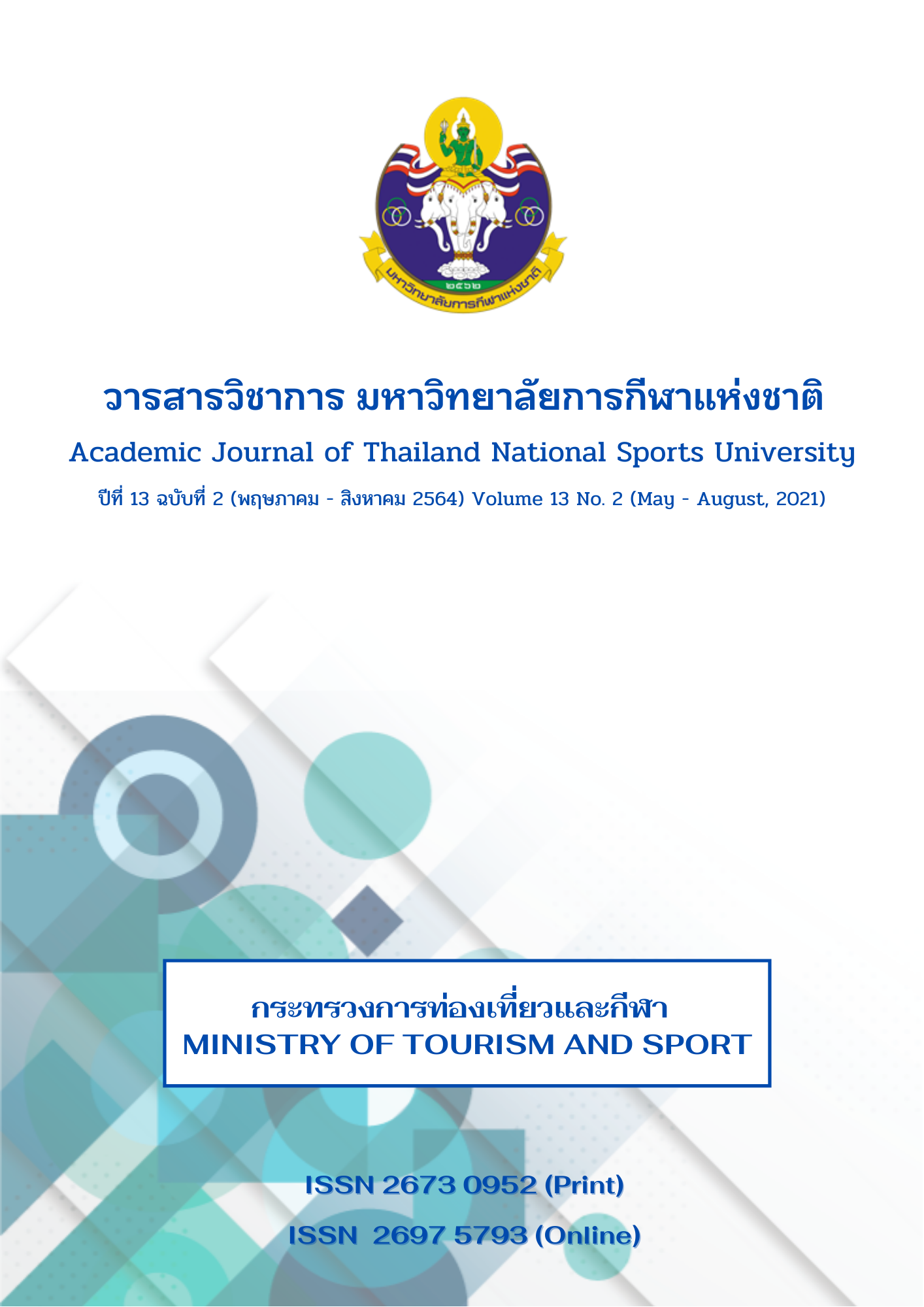THE EFFECT OF SWIMMING WITH NINE SQUARES TRAINING ON AUTISTIC CHILDREN’S REACTION TIME
Main Article Content
Abstract
This research aimed to study the effects of swimming with 9-square training on the reaction time of autistic children. The target group was obtained by purposeful sampling, i.e., 3 qualified male autistic children and 1 qualified female autistic child according to the diagnosis from the physician, with parental consent. They were studying at private schools in Hat Yai District, Songkhla Province; classified as the moderately autistic group; age between 7-10 years. A program of swim training combined with 9-square training were tried out in the research. The test was conducted twice, i.e., before training and after training in Week 8. The statistic used was Wilcoxon Signed Ranks Test.
The findings indicated that swimming with 9-square training could reduce the reaction time of hands and feet in the experimental group, with the significance of .05. Before training, the mean of the reaction time of hands in the experimental group = 5.37; S.D. = 1.29. After training in Week 8, 3 days a week in the evening from 5.00 - 6.00 pm. on Monday, Wednesday, and Friday, the mean in the experimental group = 3.43; S.D. = 0.78. The maximum reaction time before training = 7.00 the minimum = 3.98. The maximum reaction time after training = 4.26 the minimum = 2.72. The mean of the reaction time of feet in the experimental group = 6.27 S.D. = 1.82. After training in Week 8, the mean in the experimental group = 3.78 S.D. = 0.77. The maximum reaction time before training = 8.62 the minimum = 4.42. The maximum reaction time after training = 4.46 the minimum = 2.86.
Keywords: Autistic, Swimming, Nine Square, Reaction Time
Article Details
The published article is a copyright of the Academic Journal of Thailand National Sports University. The passage appeared in each article in this academic journal is a perspective of each author which is not related to the journal. Each author is required to be responsible for all components of his/her own article. If there are any mistakes, each author must be responsible for those mistakes on his/her own.
References
Charoen Krabuanrat. (2005). Nine Squares Training. Retrieved from http://www.ku.ac.th/kunews/box9.html
Department of Academic Affairs Ministry of Education. (2000). The development of autistic children’s. Bangkok. Department of Academic Affairs Ministry of Education.
Hemsuda Pooltavee. (2006). The effects of neuromuscular coordination training upon response time of hands in childhood autism (Master’s thesis), Kasetsart University.
Natthapron Suddee. (2000). Swimming: Essential life skills. Journal of Education, 3(1), 12-20.
Penkae limsila. (2012). Meeting: The development of autism spectrum disorders in higher education (1st ed.). Bangkok. Kasetsart University. Printing House: Saim Print.
Thairat News online. (2014).Beware of water hazards in autistic children’s. Retrieved from http://www.thairath.co.th/content/436723
Thaveesak Siriratrakha. (2012). Autistic. Online. Retrieved from http://www.happyhomeclinic.com/au02-autism.html


